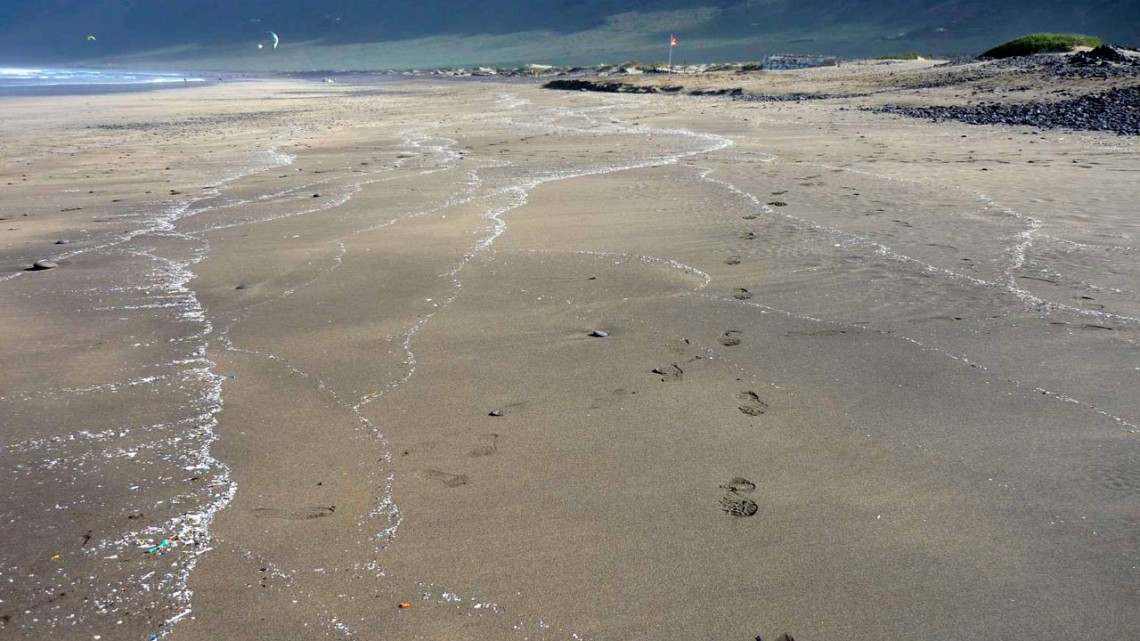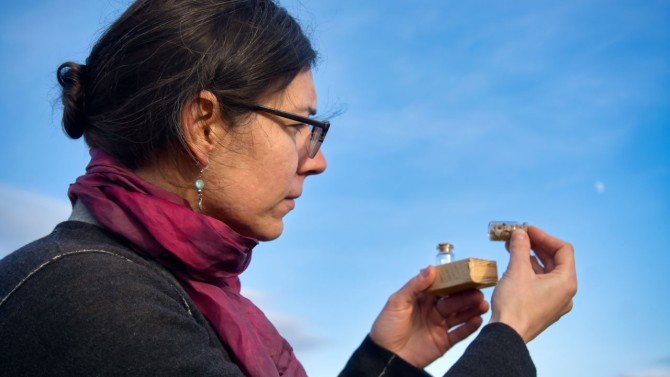
Microplastics outline the incoming tide at a Lanzarote Island beach in the Canary Islands.
Doctoral student co-authors global plastics declaration
By Blaine Friedlander, Cornell Chronicle
Cornell doctoral candidate Bethany Jorgensen facilitated and co-authored the 2022 Lanzarote Declaration – a wish list of actions and policies prepared by the world scientists who study Earth-contaminating plastic. The document is intended to influence ongoing discussions to complete a United Nations treaty on plastic pollution.
The declaration, which synthesized scientific ideas and offered detail on how countries could proceed in reducing plastic waste, was sent Nov. 25 to U.N. Secretary-General António Guterres.
“The world is becoming aware and concerned about plastics and ubiquitous microplastic pollution,” said Jorgensen, who works for the Civic Ecology Lab in the Department of Natural Resources and the Environment, in the College of Agriculture and Life Sciences. The lab is run by Marianne Krasny, professor in the Department of Natural Resources and the Environment
Jorgensen conducts research with local and global communities to untangle the political ecology of plastic pollution, and she has been a longtime organizer of MICRO, a biennial international conference series under the patronage of UNESCO, where the declaration originated.
“We’ve seen this incredible growth and expansion from the scientific community responding to this worldwide microplastic problem,” Jorgensen said. “We see policies coming into effect, but it’s been very piecemeal, fragmented.”
Last March, the United Nations Environmental Assembly agreed to develop and mandate a legally binding U.N. Treaty on plastic pollution, which is expected to be completed in late 2024. Negotiators developing the treaty first met in early December.
In key provisions of the 2022 Lanzarote Declaration, the scientists requested inclusion of all anthropogenic polymers and particle sizes, nanoplastics, bio-based plastics, biodegradables, water-soluble polymers and chemical additives. The treaty, the scientists said, should focus on common characteristics of concern and account for the life cycle of plastics, across marine, freshwater, terrestrial and atmospheric ecosystems.
Plastic pollution has grown from 2 million tons in 1950 to 348 million tons in 2017, according to the U.N. Environmental Program (UNEP). By 2050, greenhouse gas emissions associated with plastic production, use and disposal, would account for 15% of allowed emissions, under the goal of limiting global warming to 1.5 degrees Celsius, in line with the Paris Agreement on climate change.
More than 800 marine and coastal species are affected by plastic pollution through ingestion, entanglement and other dangers, according to UNEP, while around 11 million tons of plastic waste flow each year into the ocean – a number that is likely to triple by 2040.
While global plastic pollution is complex, its intricacy is no reason to delay action, the document said.
Jorgensen is hopeful that a U.N. treaty will be in place by 2025. “This will be more than just symbolic,” she said. “Telling the world about a plastics treaty years in advance was incredibly ambitious and then to pronounce that we’re going to get it done is quite important. I don’t know what we can expect, but the fact that the U.N. is doing this is a rallying cry.”
Media Contact
Get Cornell news delivered right to your inbox.
Subscribe

